In today’s digital landscape, email marketing remains a cornerstone of effective customer engagement and business growth. Two popular platforms, ConvertKit and Mailchimp, have emerged as frontrunners in this space, each offering unique features and capabilities to cater to different business needs. As businesses strive to optimize their email marketing strategies, choosing the right platform becomes crucial for success.
Key Facts
- ConvertKit targets creators and small eCommerce businesses, while Mailchimp caters to small- to medium-sized businesses.
- ConvertKit offers a simpler interface with limited templates, whereas Mailchimp provides a more robust set of features and customization options.
- Mailchimp’s free plan supports up to 500 contacts, while ConvertKit’s free plan allows up to 300 subscribers with unlimited email sends.
Comparing ConvertKit and Mailchimp: Features, Functionality, and User Experience

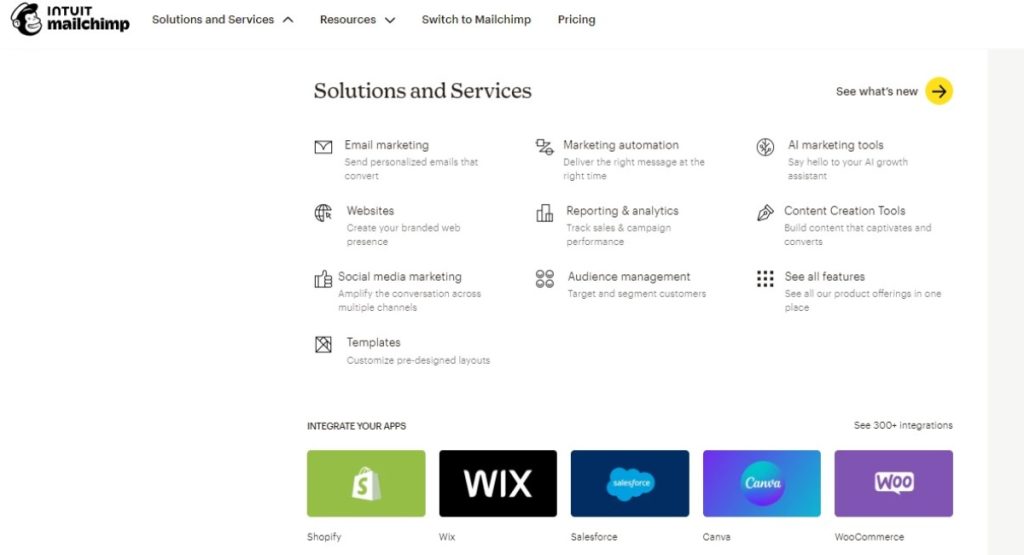
User Interface and Ease of Use
ConvertKit prides itself on simplicity, offering a clean and straightforward interface. As noted by many users, “ConvertKit’s interface is incredibly intuitive, making it perfect for beginners or those who prefer a no-frills approach.” However, it lacks drag-and-drop options, which may limit customization for some users.
Mailchimp, on the other hand, provides a more feature-rich interface with a drag-and-drop email builder. This flexibility makes it suitable for users with varying technical skills. A Mailchimp user commented, “The drag-and-drop editor is a game-changer, allowing me to create visually appealing emails without any coding knowledge.”
Email Templates and Design
ConvertKit offers a limited selection of 50+ templates, categorized by type (e.g., newsletters, product sales pitches). While this may be sufficient for creators focused on content, it might feel restrictive for businesses seeking more diverse design options.
Mailchimp shines in this area, providing over 100 themed templates with AI-enhanced options. This variety allows for greater creativity and customization, making it a preferred choice for businesses that prioritize visual branding.
Automation and Segmentation
Both platforms offer robust automation features, but with different approaches. ConvertKit allows for the creation of unlimited automated sequences triggered by specific actions, with no cap on steps in automation. Its visual automation editor connects events, actions, and conditions for custom paths.
Mailchimp’s automation capabilities are more advanced, especially in higher-tier plans, offering up to 200 journey points. It also provides AI-powered predictive analytics for refining customer segments, which can be particularly valuable for data-driven marketers.
Hidden Gem #1: ConvertKit’s Resend to Unopened Feature
One lesser-known yet highly effective strategy is leveraging ConvertKit’s “Resend to Unopened” feature. This tool automatically resends emails to subscribers who didn’t open your initial campaign, significantly boosting open rates without additional effort. By targeting only those who missed the first email, you enhance engagement while maintaining list hygiene.
Hidden Gem #2: Mailchimp’s Strict Affiliate Marketing Policy
Mailchimp enforces a stricter affiliate marketing policy, which can be exploited to improve overall email deliverability. By adhering to these guidelines, you reduce the risk of being flagged as spam, leading to higher inbox placement rates for your campaigns. This focus on quality helps maintain your sender reputation and ensures better engagement with your audience.
Hidden Gem #3: ConvertKit’s Tag-Based Segmentation for Personalization
ConvertKit’s tag-based system is a powerful tool for creating highly targeted segments. By tagging subscribers based on their actions and preferences, you can personalize your email campaigns to a greater extent. This level of personalization leads to more relevant content being delivered to each subscriber, enhancing engagement and conversion rates.
Hidden Gem #4: Mailchimp’s CRM Integrations
Mailchimp offers numerous CRM integrations that allow you to create a more comprehensive view of your customers. By integrating with various CRM systems, you can synchronize customer data, track interactions across platforms, and improve your targeting strategies. This integration capability makes Mailchimp a versatile tool for businesses looking to streamline their marketing efforts.
Hidden Gem #5: ConvertKit’s Sequences for Automated Onboarding
ConvertKit’s “Sequences” feature enables you to create sophisticated, automated onboarding series for new subscribers. This automation ensures that new subscribers receive a series of welcome emails that engage them from the start. By automating the onboarding process, you improve engagement rates and set the stage for long-term subscriber retention.
Analytics and Reporting
ConvertKit provides essential analytics, tracking opens, clicks, bounces, conversions, and sales with simple dashboards. It offers visual automations reporting and sales reporting for digital products, which can be beneficial for content creators and small eCommerce businesses.
Mailchimp excels in this area, offering detailed analytics including click maps, benchmarks, social media stats, and customer lifetime value. Its advanced reporting features, such as predictive segmentation and comparative reports, provide deeper insights for businesses looking to optimize their email marketing strategies.
Hidden Gem: Exploit Mailchimp’s CRM Integrations
Mailchimp’s extensive CRM integrations allow businesses to synchronize their customer data seamlessly. By connecting Mailchimp with your existing CRM system, you can gain a unified view of your customers, enabling more precise targeting and personalized email campaigns. This integration enhances the effectiveness of your marketing efforts by leveraging comprehensive customer insights.
Pricing and Value
ConvertKit’s pricing structure is straightforward, with a generous free plan and paid plans starting at $25/month for the Creator plan and $50/month for the Creator Pro plan.
Mailchimp offers a competitive pricing model, with a free plan supporting up to 500 contacts and paid plans starting at $13/month for Essentials, $20/month for Standard, and $350/month for Premium. While Mailchimp’s plans can be more expensive at higher subscriber counts, they offer a broader range of features that may justify the cost for growing businesses.
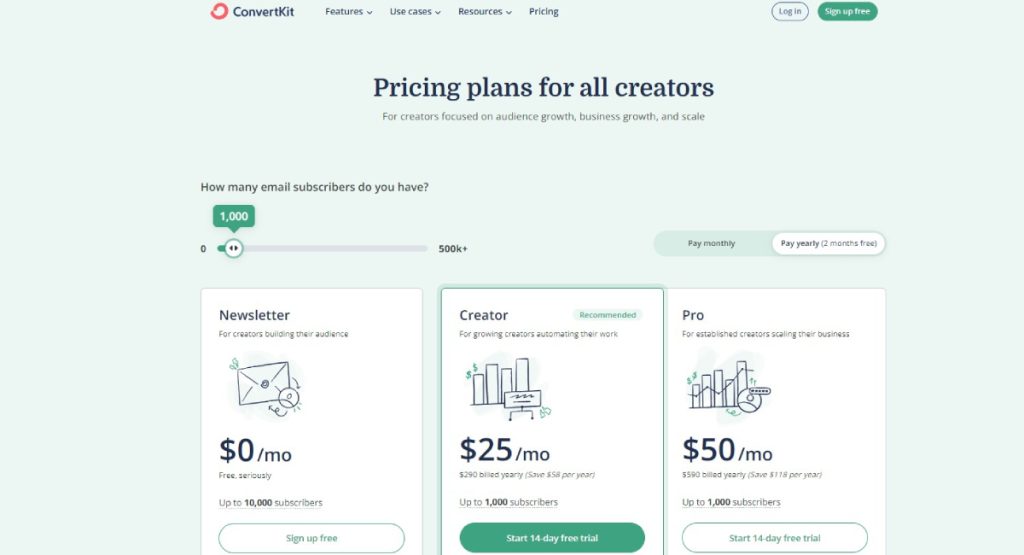
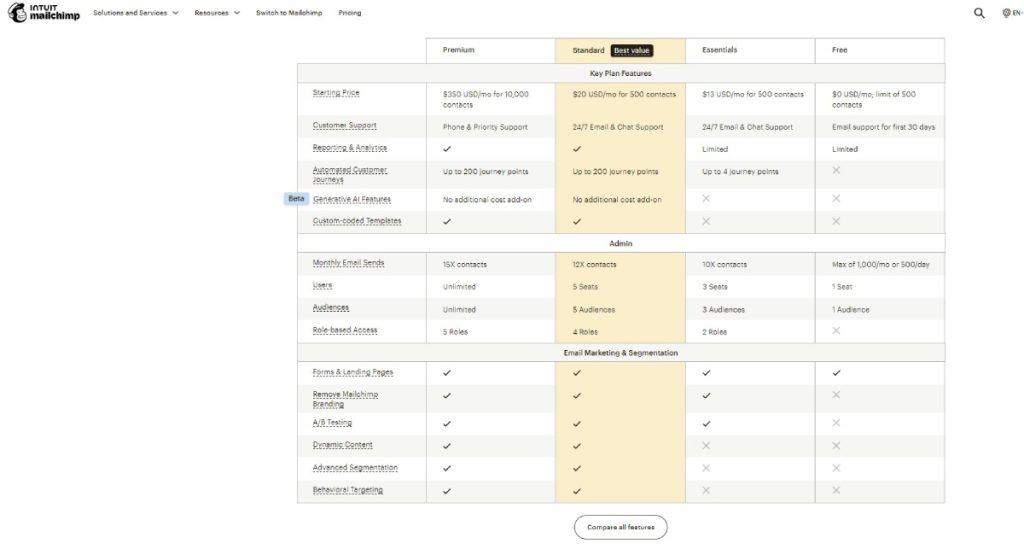
Hidden Gem: Utilize ConvertKit’s Digital Product Sales Tools
ConvertKit’s built-in tools for selling digital products and paid subscriptions allow you to diversify your revenue streams directly within your email marketing platform. This seamless integration facilitates the promotion and sale of digital goods without the need for additional software, streamlining your business operations.
Hidden Gem: Leverage Mailchimp’s Mobile App for On-the-Go Management
Mailchimp’s mobile app enables you to manage your campaigns and monitor performance on the go. This mobile accessibility gives you the edge in responsiveness and allows for timely adjustments to your marketing strategies, ensuring that you can react swiftly to changing trends and subscriber behaviors.
Hidden Gem: Implement Conditional Content in Mailchimp Alternatives
While not available in Mailchimp, using conditional content features in alternatives like Kit allows you to show or hide certain content based on subscriber tags. This functionality enables the creation of highly personalized emails that cater to the specific interests and behaviors of your audience, enhancing the relevance and effectiveness of your campaigns.
Automation and Scheduling
ConvertKit and Mailchimp both offer robust automation features, but their approaches differ significantly. ConvertKit’s visual automation builder is user-friendly, allowing for the creation of complex, behavior-based automations without technical expertise. This feature is ideal for creators looking to nurture their audience through personalized email sequences.
Mailchimp’s automation capabilities are more advanced, especially in higher-tier plans. With up to 200 journey points and AI-powered predictive analytics, Mailchimp provides detailed automation workflows that can cater to complex marketing strategies. This makes Mailchimp a suitable choice for businesses seeking comprehensive automation solutions.
Innovative Solutions by Prism Reach
Prism Reach is an innovative AI-powered SaaS solution designed to transform email marketing through deep personalization. By leveraging advanced AI algorithms, Prism Reach customizes every aspect of newsletters based on subscriber behavior and preferences, enabling publishers, blogs, forums, and eCommerce businesses to engage their audiences more effectively.

Improved Productivity
Automation & Insights: Prism Reach leverages advanced automation tools and AI-driven insights to streamline the creation and management of email marketing campaigns. By automating repetitive tasks such as content scheduling, segmentation, and performance tracking, marketers can significantly reduce the time and effort required to run campaigns. Additionally, the platform’s AI analyzes campaign data in real-time, providing actionable insights that help optimize strategies and enhance overall productivity. This allows marketers to dedicate more time to strategic planning and creative initiatives, driving better results with less manual effort.
AI-Powered Personalization
Customized Content: At the heart of Prism Reach is its sophisticated AI technology that personalizes every aspect of newsletters based on individual subscriber interests and behaviors. By utilizing detailed user avatars and predictive analytics, Prism Reach ensures that each newsletter is tailored to the unique preferences of each subscriber. This level of customization goes beyond basic segmentation, delivering highly relevant content that resonates with recipients. As a result, subscribers receive newsletters that feel personal and engaging, increasing the likelihood of interaction and fostering a stronger connection between the publisher and their audience.
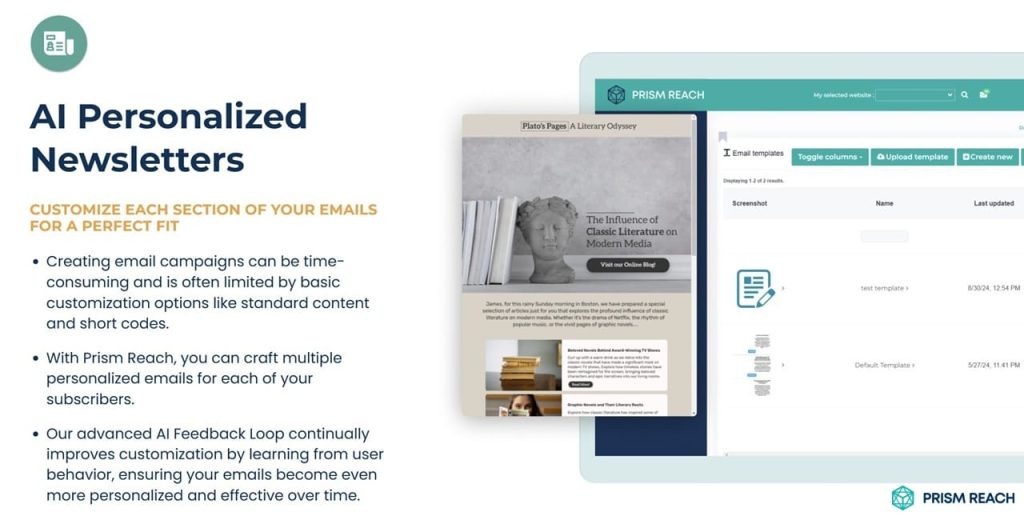
Increased Engagement
Higher Engagement Rates: Publishers using Prism Reach have reported up to a 40% increase in engagement rates. This significant boost is attributed to the platform’s ability to deliver personalized and relevant content that captures subscribers’ attention. By tailoring newsletters to match individual interests and behaviors, Prism Reach enhances subscriber retention and interaction. Higher engagement rates translate to more clicks, opens, and conversions, ultimately leading to improved campaign effectiveness and better overall performance for email marketing efforts.
Innovative Solutions
User Avatars & Predictive Analytics
Detailed User Profiles: Prism Reach’s AI-driven user avatars create comprehensive profiles for each subscriber by analyzing a wide range of data points, including location, engagement history, and predicted interests. These detailed profiles enable the platform to anticipate subscriber needs and preferences, allowing for hyper-personalized newsletters that cater specifically to each individual. Predictive analytics further enhance this capability by forecasting future behaviors and interests, ensuring that content remains relevant and engaging over time.
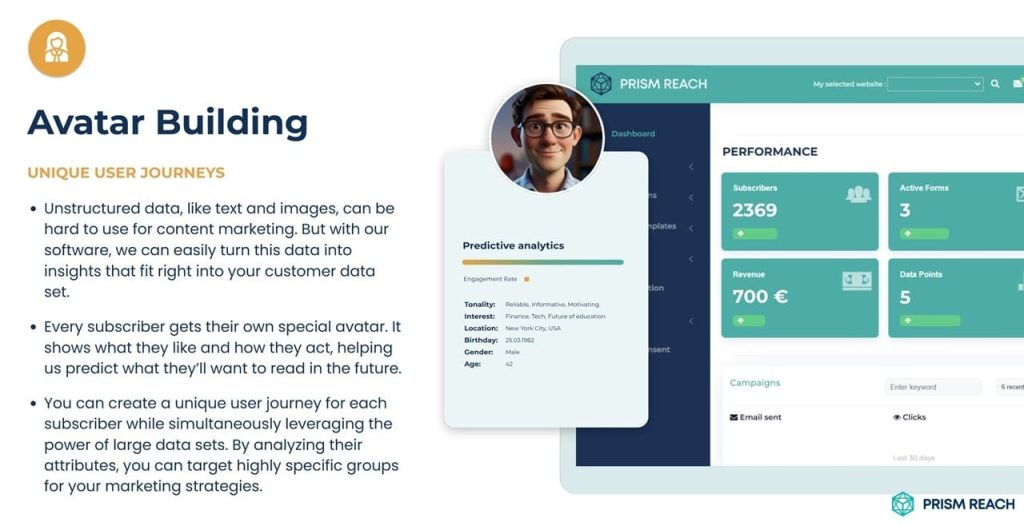
Dynamic Content Selection
Relevant Content Delivery: The dynamic content selection feature of Prism Reach ensures that each newsletter contains the most pertinent content for every subscriber. By continuously analyzing subscriber interactions and preferences, the AI determines which pieces of content are most likely to resonate with each individual. This approach maximizes engagement by delivering content that is not only relevant but also timely, keeping subscribers interested and invested in the newsletters they receive.
Comprehensive Features
Seamless Integration
Quick Setup & Easy Migration: Prism Reach is designed for ease of use, with a seamless integration process that can be completed within just 10 minutes. The platform supports one-click uploads, allowing marketers to effortlessly migrate existing subscriber lists without any downtime. This user-friendly setup ensures that businesses can quickly start leveraging the powerful features of Prism Reach without the need for extensive technical expertise or lengthy implementation periods.
AI-Enhanced Sign-Up Forms
Increased Sign-Up Rates & GDPR Compliance: The AI-enhanced sign-up forms provided by Prism Reach are designed to attract more subscribers by offering personalized content tailored to the user’s context. These forms utilize AI-generated content that is relevant and compelling, thereby increasing sign-up rates. Additionally, the platform ensures GDPR compliance by incorporating data protection measures, giving both publishers and subscribers peace of mind regarding the security and privacy of their information.
Advertising & Swap Networks
Targeted Advertising & Mutual Promotion: Prism Reach includes robust advertising and swap network features that facilitate targeted advertising similar to major online ad networks. This allows publishers to place ads precisely based on subscriber data, enhancing the effectiveness of advertising campaigns. Additionally, the swap network feature enables mutual promotion among publishers, broadening content reach and boosting subscriber engagement through collaborative marketing efforts.
Advanced AI Capabilities
Anti-Spam Checks & High Deliverability Rates: Prism Reach incorporates advanced AI capabilities to ensure that emails reach their intended recipients without being flagged as spam. The platform conducts thorough anti-spam checks and employs strategies to maintain high deliverability rates. This focus on deliverability is crucial for maintaining engagement levels and ensuring that newsletters consistently reach subscribers’ inboxes, thereby maximizing the impact of email marketing campaigns.
Prism Reach vs. Competitors
Advanced Personalization
Superior AI-Driven Personalization: Compared to ConvertKit and Mailchimp, Prism Reach offers a higher degree of personalization through its AI-powered user avatars and predictive analytics. While traditional platforms rely on basic segmentation, Prism Reach’s detailed user profiles and behavior predictions enable a more nuanced and accurate personalization strategy. This results in newsletters that are significantly more relevant and engaging for each subscriber, leading to better overall performance.
Efficiency
Enhanced Automation & Productivity: Prism Reach excels in automation, reducing the time and effort needed for campaign management. The platform’s AI-driven insights and automated tools streamline the entire email marketing process, from content creation to performance analysis. This enhanced efficiency allows marketers to focus on strategic growth and creative aspects of their campaigns, rather than getting bogged down by manual tasks. In contrast, traditional platforms like ConvertKit and Mailchimp may require more hands-on management to achieve similar levels of efficiency.
Higher Revenue
Better Monetization through Tailored Advertising: With Prism Reach, businesses can achieve higher revenue through tailored advertising and targeted content. The platform’s ability to deliver highly personalized content increases subscriber engagement, which in turn boosts monetization opportunities. Tailored advertising ensures that ads are relevant to the audience, enhancing their effectiveness and driving higher returns on investment. Additionally, the mutual promotion features help expand content reach, further increasing revenue potential. Compared to ConvertKit and Mailchimp, Prism Reach provides more robust tools for maximizing revenue from email marketing efforts.
Upgrade Your Email Marketing with AI Personalization!
FAQ
Conclusion
In the ConvertKit vs Mailchimp debate, the choice ultimately depends on your specific business needs and goals. ConvertKit excels in simplicity and is ideal for content creators and small eCommerce businesses looking for a straightforward email marketing solution. Its focus on automation and sales tracking for digital products makes it a strong contender for those in the creative space.
Mailchimp, with its extensive feature set, advanced analytics, and customization options, is better suited for small to medium-sized businesses seeking a comprehensive email marketing platform. Its AI-enhanced capabilities and robust integrations provide a solid foundation for scaling email marketing efforts.
However, for businesses seeking cutting-edge personalization and AI-driven insights, Prism Reach offers an innovative alternative that could potentially outperform both ConvertKit and Mailchimp in terms of engagement and revenue generation. Prism Reach’s AI-powered personalization, increased engagement rates, and improved productivity make it a valuable tool for businesses aiming to enhance their email marketing strategies.
Ultimately, the best choice will depend on your business size, technical requirements, budget, and long-term marketing goals. Consider trialing each platform to determine which aligns best with your specific needs and workflow.